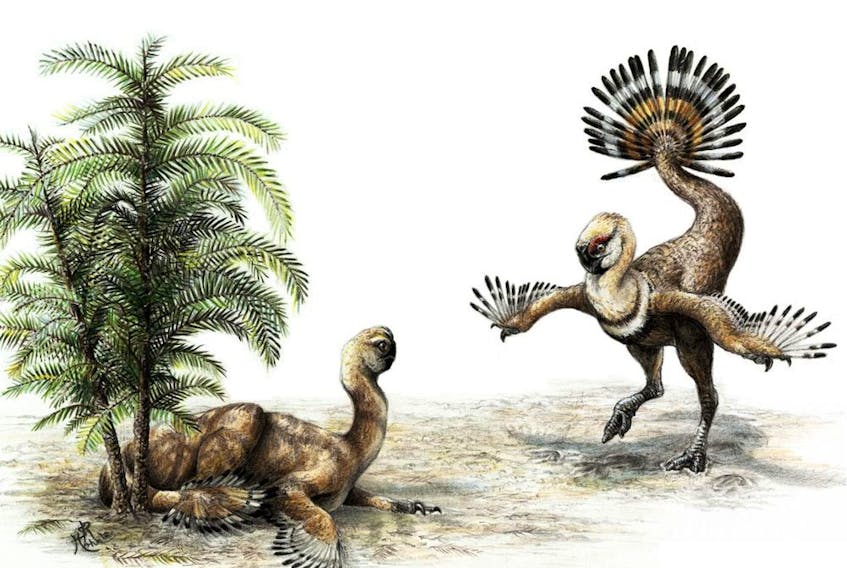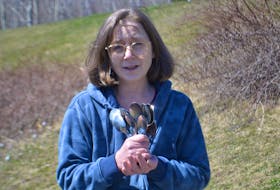A new study by a former University of Alberta postdoctoral researcher sheds light on how dinosaurs’ feathers evolved from simple insulators into a flight-enabling feature.
The evolution took a complex path, with the formation of feathers that existed mainly for sex appeal acting as a vital stepping stone towards the dinosaurs that were no longer bound to the ground, according to the study.
“There are three identifiable feather functions that we see spread out through the evolution of feather dinosaurs,” said Scott Persons, now the curator of the Mace Brown Museum in South Carolina’s College of Charleston, as well as a professor at the school. Before taking on that role, Persons completed his masters, PhD and postdoc studies at the U of A.
The first feathers had the role of insulating dinosaurs by containing their body heat, while the final type of feathers is the most fully developed, and the closest to those found on birds today. These let dinos glide or parachute through the air, the precursor to the evolution of flying birds.
The variety that bridged these two types feathers served the same purpose as the flashy feathers of peacocks or the antlers of deer — attracting mates.
“They were used as sexual display structures. They would be flaunted and waggled about in courtship rituals,” Persons said. “Our study is looking at how this role of sexual selection was a very important intermediate function in order to ultimately bring dinosaurs the feathers that were complex enough and broad enough in range and fan that they could be used for gliding and then ultimately for flying.”
Throughout the study, Persons analyzed troves of fossils, many of which required travelling to China. It was a study that encompassed much of his time as a postdoctoral student at the U of A.
Persons stressed that evolutionary processes like this don’t happen linearly.
“Evolution tends to work in a bushy, branching fashions. There were many splits of the feathered dinosaur family tree that led to animals experimenting with feather forms that were ultimately dead-ends,” he said.
While feathers often aren’t a prominent feature of dinosaurs in pop-culture portrayals, like the raptors of Jurassic Park, many dinosaurs had a full coat of feathers.
“Those velociraptors ought to be covered in feathers,” Persons said of the film, adding that many larger, warmer-climate dinosaurs did look more like their traditional scaly portrayal.
Copyright Postmedia Network Inc., 2019









